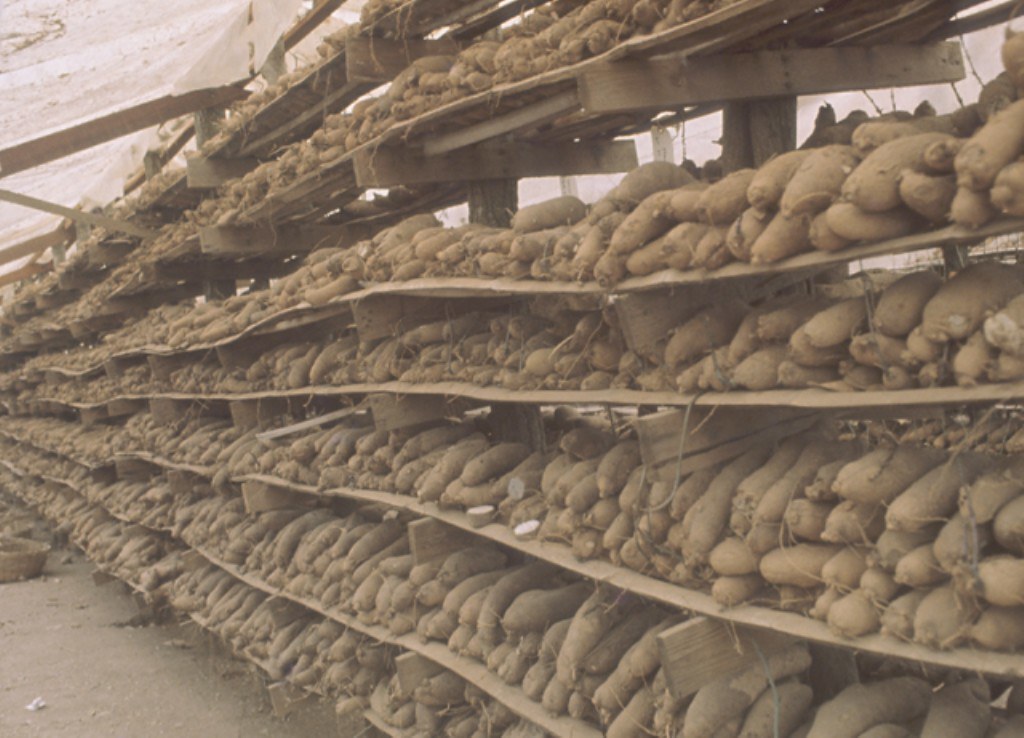Yam flour is the powdered starch made from the starchy tubers of the yam, which is a perennial herbaceous vine from the genus Dioscorea. Yam as a staple food is cherished by lots of people, being the most consumed root crop after cassava.
Yam is a food crop that is used to produce different kinds of yam flour, such as Elubo, Amala, and Poundo yam, which are sold at different prices. It also plays an important role in food security and in the livelihoods of 60 million people in the West African region.
Yam flour is known to be very popular among Yoruba, and it’s said to be one of the best foods they take. They are known to be prepared differently; while one is prepared from the peels on the back of yam, the other is prepared from the white flesh of yam, and the peel is not included.
FMARD Moves to Resuscitate Yam Export
Another reason for processing yam to floor has to do with the post-harvest loss associated with the produce, as over 30% of yam tubers that are harvested get wasted due to a lack of amenities for storage.
SOME COMMON TYPES OF YAM TUBER IN NIGERIA ARE:
White yam (Dioscorea rotundata)
Water yam (Dioscorea alata).
Yellow yam (Dioscorea cayensis)
Bitter yam (Dioscorea dumetorum)
STAGES ON HOW TO PROCESS YAM TUBER TO YAM FLOUR
Before you start an elubo (yam flour) business, you need the required capital, which will help you decide if you want to start a small-scale flour mill or a large scale flour mill. Yam flour processing is a business that involves the conversion of yam tubers into yam flour, and it involves several stages, which include:
Cleaning: Clean to remove sand and dirt.
Peeling: Peel manually using knives.
Slicing: Slice peeled yam tubers into chips of uniform size.
Cleaning: Clean or rinse the chips with water.
Drying: Dry yam chips in a cabinet dryer.
Milling: Mill dried chips into a fine flour using a hammer mill.
Cooling: Cool milled flour before packaging to reduce the heat generated as a result of milling.
Sieving: Sieve to remove particles.
Packaging: Package yam flour in different sizes (1kg, 2kg, 5kg, and 10kg) seal and label your packaged yams.
The dried yam slices are then milled directly into flour. Uneven particle sizes are sieved out of the flour before it is prepared into amala by mixing the flour with boiling water to create a moist dough-like mixture. The dough can accompany a whole host of different dishes, such as stews, meats, and vegetables. It is even used to make little dumplings to be served with soups.
IMPROTANCES OF YAM TUBER
Yam is a rich source of water, carbohydrates, the vitamin B complex, vitamin C, calcium, phosphorus, potassium, manganese, and essential amino acids such as phenylalanine and threonine.
Yams are linked to various health benefits that can boost brain health, reduce inflammation, and improve blood sugar control.
Hidden Prospects in Yam Production
Yams are versatile, easy to prepare, and a great vegetable to include in your diet in both sweet and savory dishes.
Yams create employment opportunities for rural communities.
It provides essential nutrition as well as a source of income from sales at local markets or exports abroad if desired by the farmer or producer.
HEALTH AND NUTRITION BENEFITS OF YAM FLOUR BUSINESS IN NIGERIA
Yam flour is a rich source of fiber, which is good for weight loss.
It also contains potassium and manganese, which are important for bone health and growth.
It is also rich in micronutrients like vitamin C, which is a strong antioxidant that helps boost the immune system.
It helps reduce the risk of cancer.
It helps prevent anti-aging.
It helps boost immunity naturally.
It helps improve eye health.
COST OF PRODUCTION AND RETURN OF INVESTMENT
A tuber of yam weighs 2–6 kg, and about 4kg of yam will produce 1kg of yam flour. A kg of yam is sold for an average of #400 depending on location, while a kg of yam flour is sold for around #2500. There is therefore great prospect for the processing of yams into yam flour.



